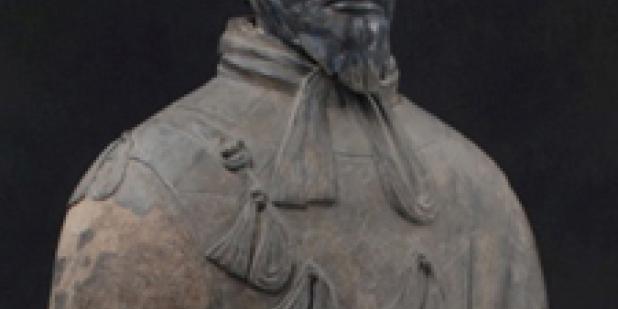Happy Lunar New Year from the USC US-China Institute!
China's Terracotta Warriors: The First Emperor's Legacy
The Minneapolis Institute of Arts presents an exhibition to showcase some of the greatest archaeological finds in China of our times.
Where

This exhibition brings to Minneapolis one of the greatest archaeological discoveries of our times. MIA was one of the first museums outside China to feature some of these figures in a small display held in 1985. Twenty-six years later, Chinese archaeologists still toil away around the burial mound of one of the most remarkable figures in the history of China.
Drawn from more than 13 institutions in China, including the Museum of Terracotta Warriors and Horses, the Shaanxi Provincial Archaeological Institute, and the Shaanxi History Museum, the exhibition is about an extraordinary man who has so influenced the unfolding history of the Middle Kingdom. Born in a time of turmoil in China's history, known as the Warring States period (475?221 BCE), The First Emperor founded the short-lived Qin dynasty (221?210 BCE). He forged the seven warring states into one nation and became Qin Shihuang, or First Emperor. He left a legacy of a centralized and bureaucratic state that would be carried onto successive dynasties over the next two millennia.
Driven by his eagerness for immortality, from the moment Qin Shihuang ascended to the throne of the Qin state at age of 13, he began to plan his burial. The complex plan and symbolic content of the mausoleum, as gradually revealed by the ongoing archaeological excavations, are far beyond anyone's imagination.
The Terra-cotta Army was discovered in 1974, and later, Chinese archaeologists excavated three pits containing more than 7,000 terra-cotta warriors with horses and chariots all designed to protect the emperor in his afterlife. The First Emperor apparently planned his tomb as an elaborate subterranean palace, a parallel world that would enable his rule into the afterlife.
The exhibition presents carefully selected objects including bronze ritual and jade artifacts, gold and silver ornaments, and palatial architectural components that illustrate the emergence of the Qin State.
Featured Articles
We note the passing of many prominent individuals who played some role in U.S.-China affairs, whether in politics, economics or in helping people in one place understand the other.
Events
Ying Zhu looks at new developments for Chinese and global streaming services.
David Zweig examines China's talent recruitment efforts, particularly towards those scientists and engineers who left China for further study. U.S. universities, labs and companies have long brought in talent from China. Are such people still welcome?






